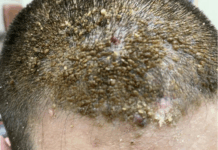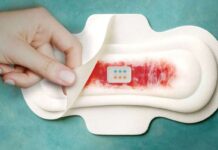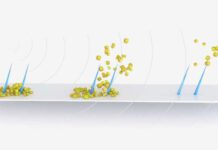Scientists at Ludwig Cancer Research have developed an AI-driven predictive model. It can identify the most potent cancer-killing immune cells used for immunotherapies in cancer patients.
In addition, the predictive model is combined with additional algorithms and can be applied to personalized treatments for cancer. Moreover, tailoring a unique cellular makeup for every patient’s tumours.
Ludwig Lausanne’s Alexandre Harari, who led the study said,
The implementation of artificial intelligence in cellular therapy is new and may be a game-changer, offering new clinical options to patients,
Identification of TILs
The study aimed to identify the TILs equipped with T cell receptors that can identify the tumour antigens. T cells, which penetrate the solid tumours are called tumour-infiltrating lymphocytes (TILs). However, not all TILs are effective at recognizing and attacking tumours.
Cellular immunotherapy involves extracting immune cells from a patient’s tumor. Optionally engineering them to enhance their natural abilities to combat cancer. In addition, reintroducing them to the body after they’ve been expanded in culture. T cells are one of the two main types of white blood cells, or lymphocytes, that circulate in the blood and patrol for virally infected or cancerous cells.
Harari explained,
Only a fraction is in fact tumor reactive—the majority are bystanders,
The challenge we set for ourselves was to identify the few TILs that are equipped with T cell receptors able to recognize antigens on the tumor.
Harari and his team developed an AI-driven predictive model to do so and it is called the TRTpred. It can rank all the TCRs (T cell receptors) based on their tumour reactivity. They used 235 TCRs gathered from metastatic melanoma patients to develop TRTpred. Moreover, they are already classified as tumour-reactive or non-reactive.
Harari and his team loaded the global gene expression or transcriptomic profiles of the T cells carrying each other into the TCR machine learning model. Using the machine learning model, they identified patterns that differentiate the tumour-reactive cells from their inactive counterparts.
TRTpred can learn from one T cell population and create a rule which can then be applied to a new population,
So, when faced with a new TCR, the model can read its transcriptomic profile and predict whether it is tumor reactive or not.
The TRTpred model analyzed TILs from 42 patients suffering from melanoma and GI, lung, and breast cancer. It identified reactive TCRs with 90% accuracy. Moreover, the researchers analyzed it further by applying a secondary algorithm filter to screen only the tumour-reactive T-cells with high avidity (bind strongly to tumour antigens).
TRTpred is exclusively a predictor of whether a TCR is tumor reactive or not,
But some tumor-reactive TCRs bind very strongly to tumor cells and are therefore very effective, while others only do so in a lazy way. Distinguishing the strong binders from the weak ones translates into efficacy.
The researchers demonstrated that T cells flagged by both TRTpred and the secondary algorithm had high avidity. Moreover, both were tumour-reactive as well. The findings aligned with the research showing that T cells typically penetrate the tumours islets deeply.
Harari said,
The team then introduced a third filter to maximize recognition of diverse tumor antigens. “What we want is to maximize the chances the TILs will target as many different antigens as possible,
The final filter organizes TCRs into groups based on their chemical and physical properties, hypothesizing that TCRs in every cluster recognize the same antigen.
Vincent Zoete, a computational scientist at Ludwig Lausanne, developer of the TCR avidity and the TCR clustering algorithms, said,
So, we pick within each cluster one TCR to amplify, so that we maximize the chances of distinct antigen targets,
Ludwig Lausanne, co-author of the study and Director George Coukos, further said,
This method promises to overcome some of the shortcomings of current TIL based therapy, especially for patients dealing with tumors not responding to such therapies today,
Our joint efforts will bring forth a completely new type of T cell therapy.




